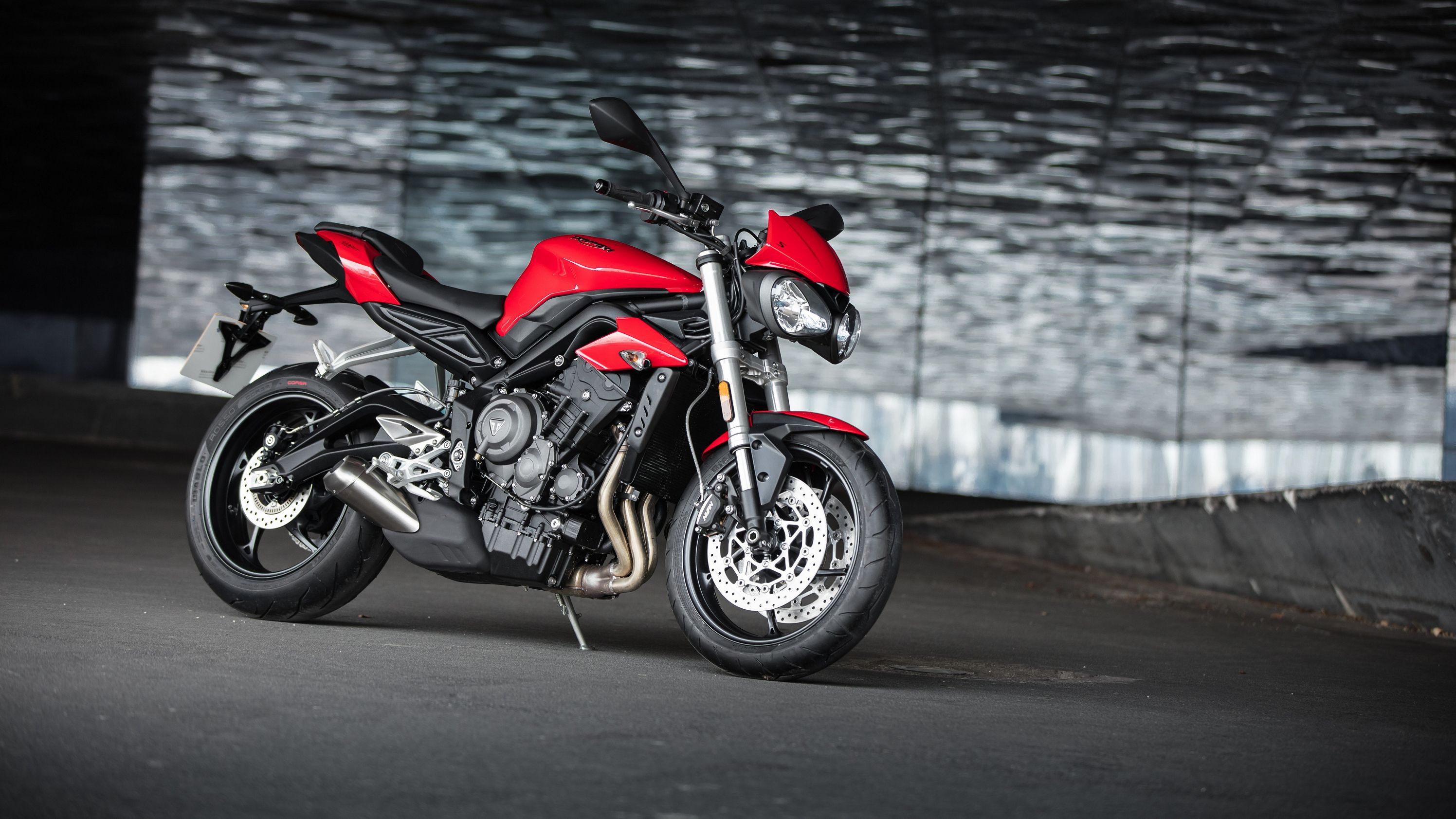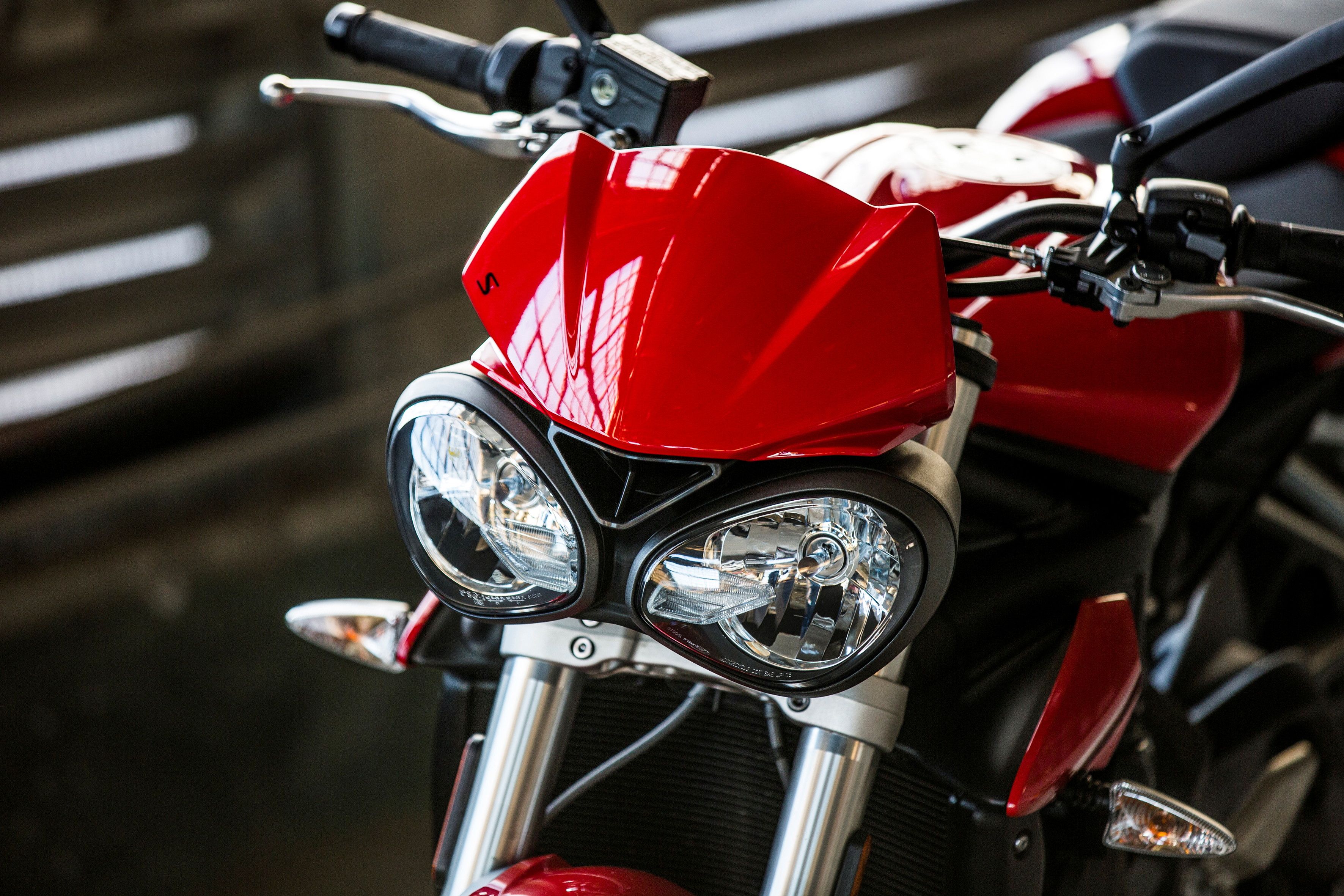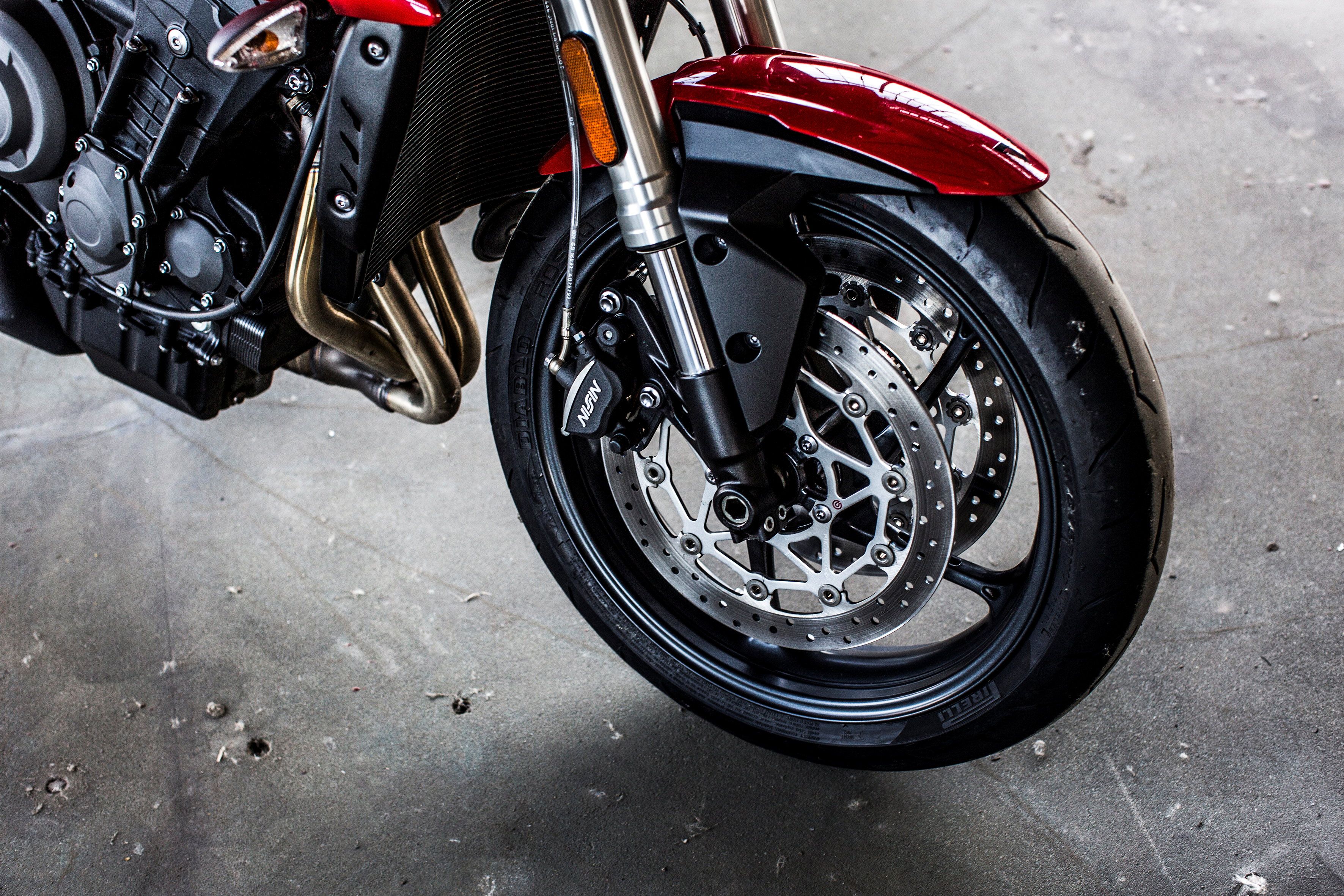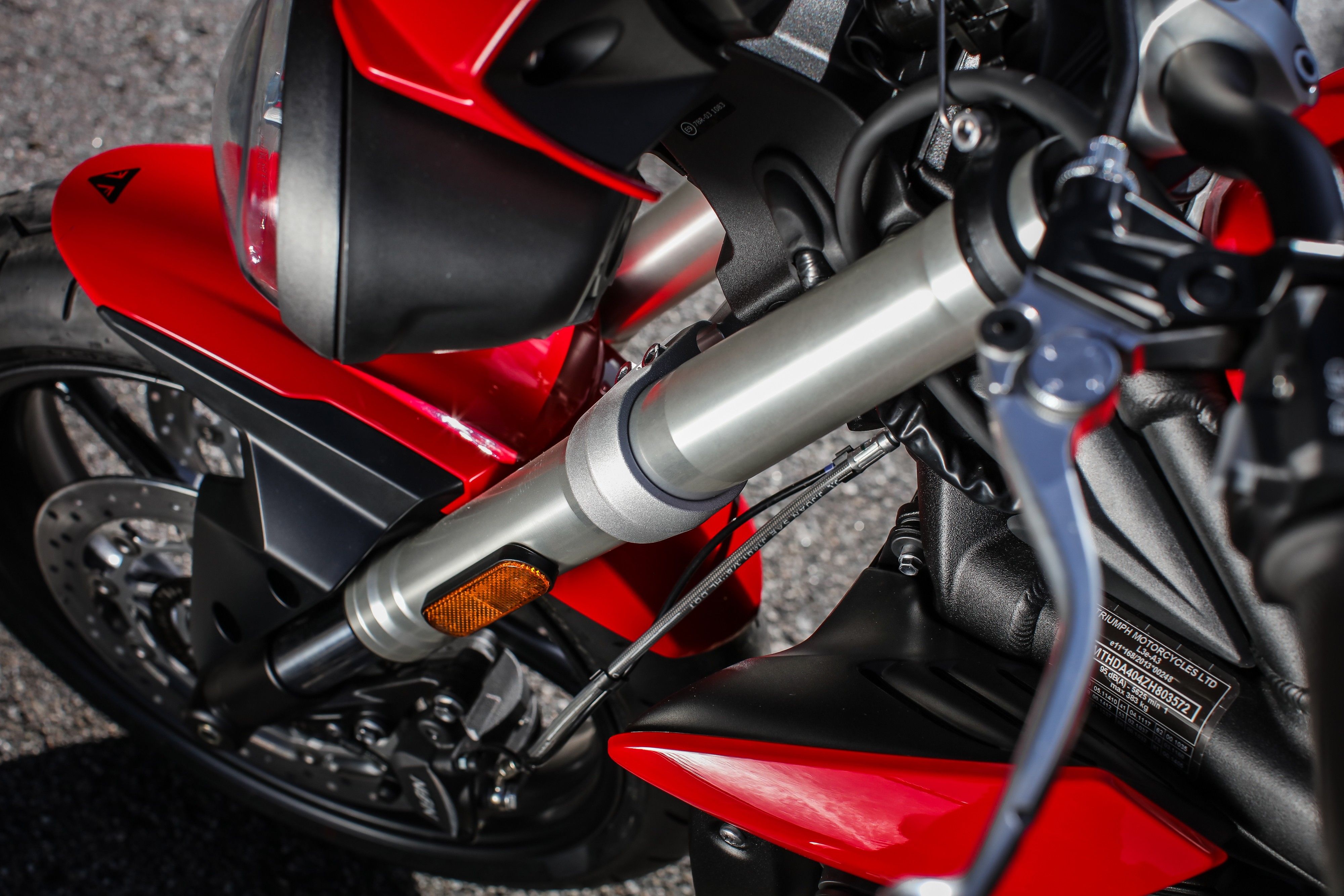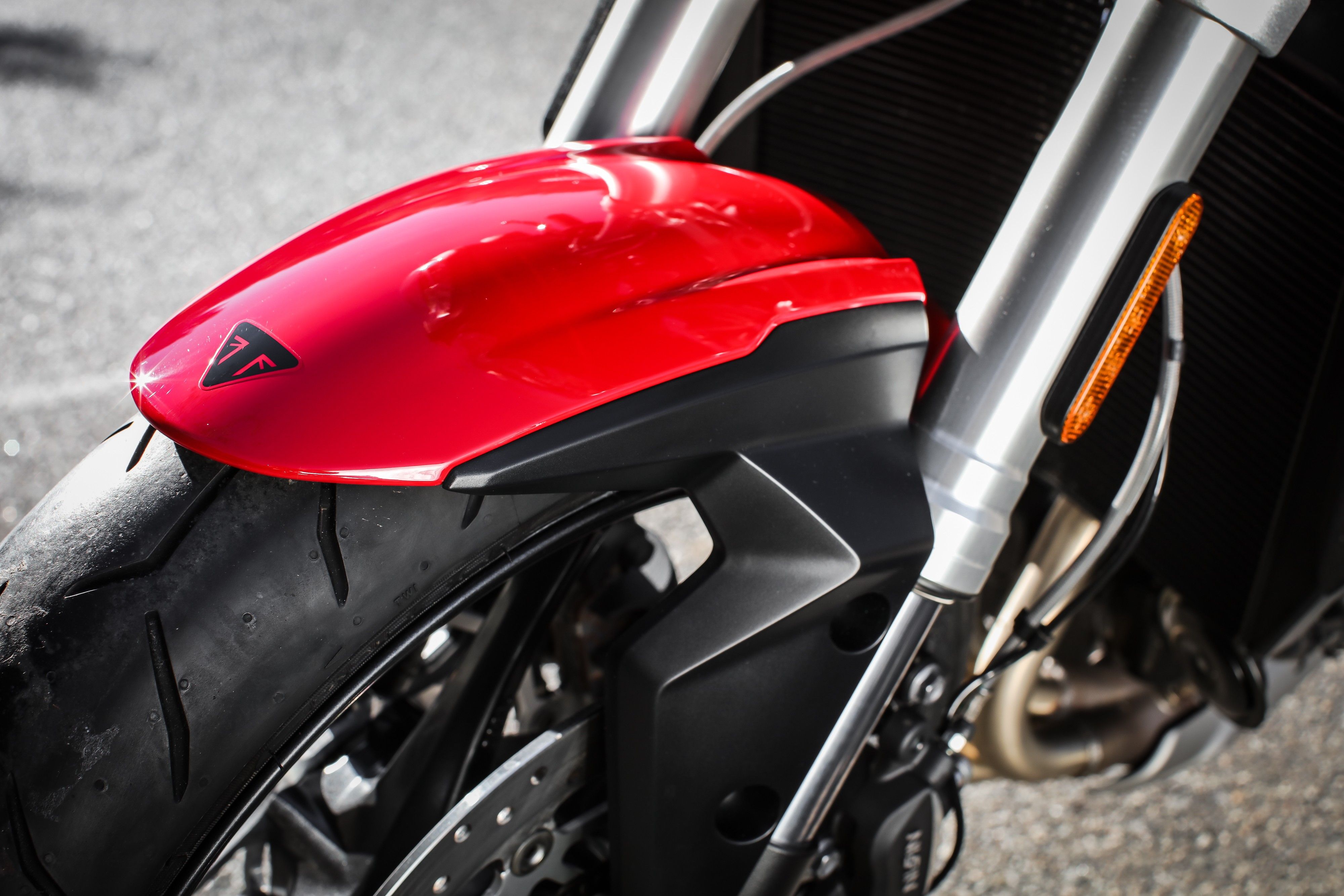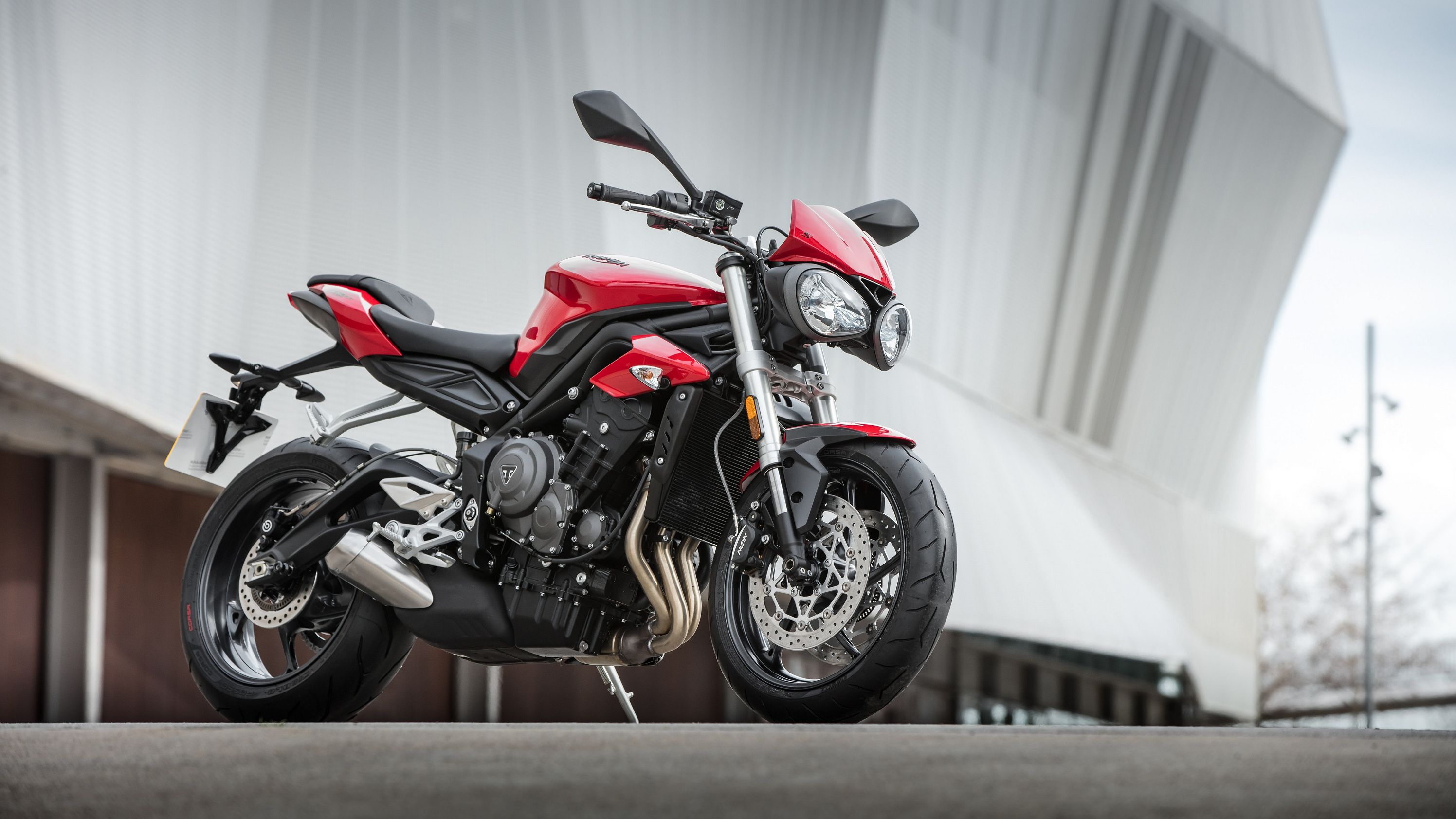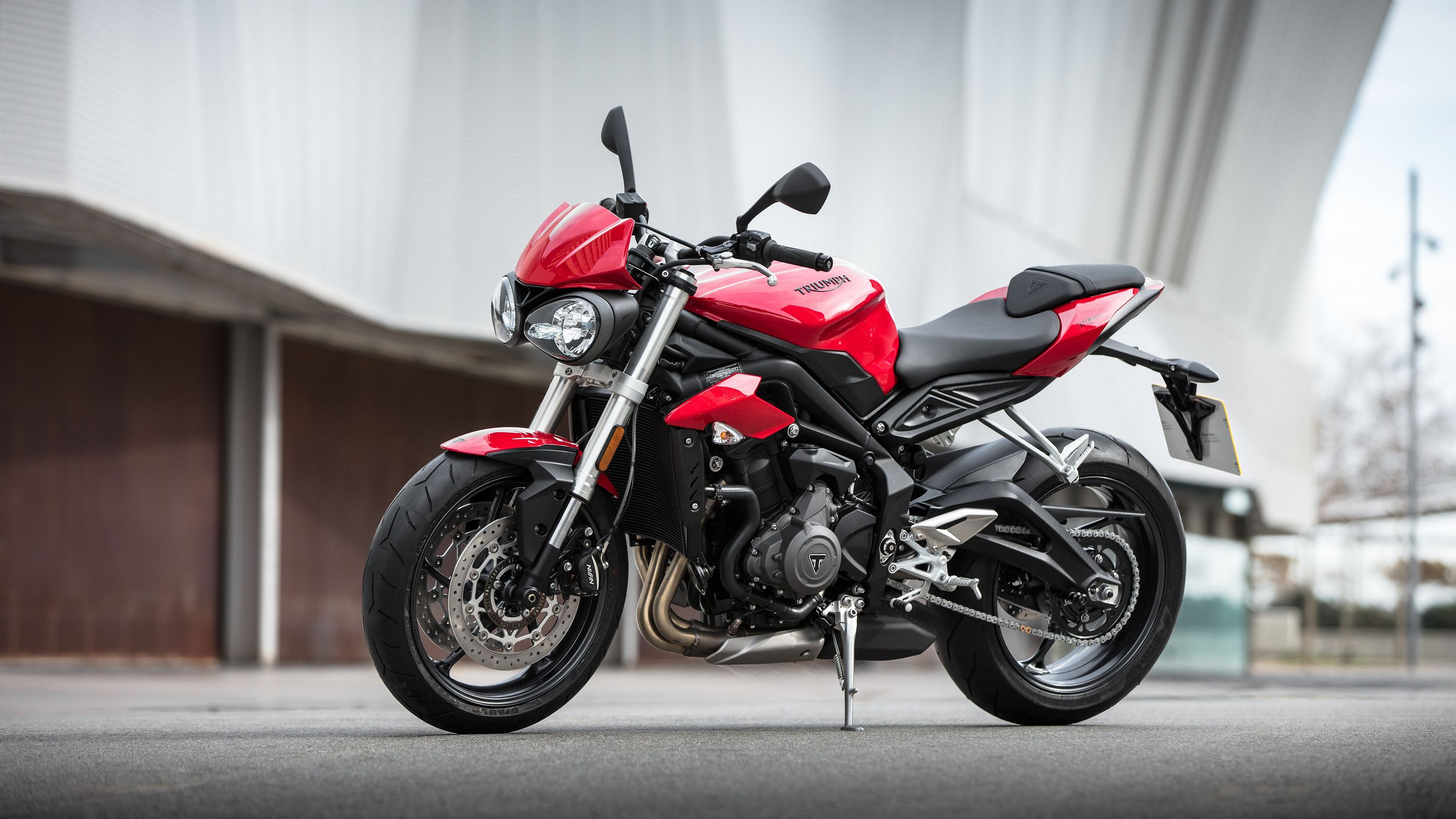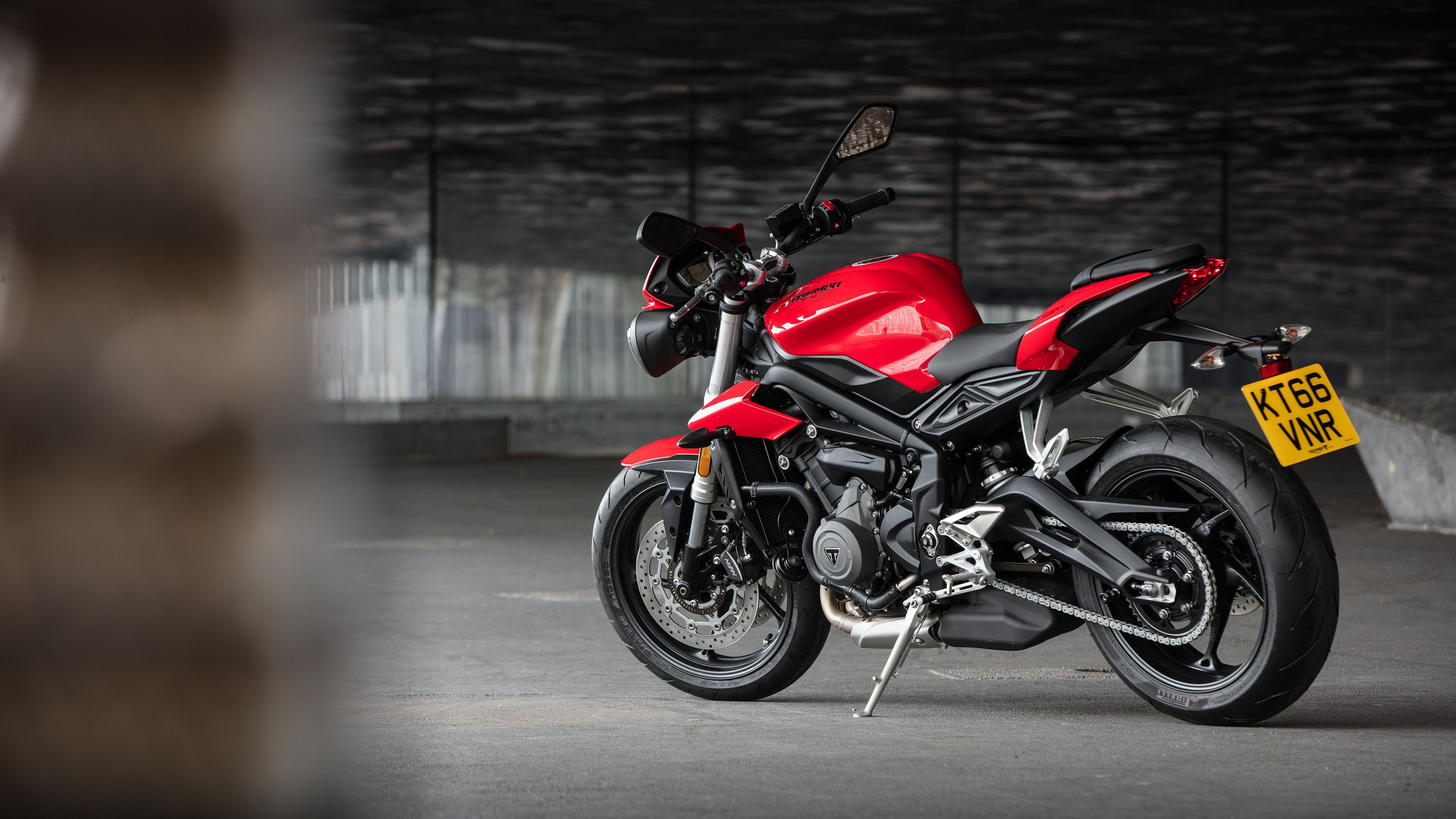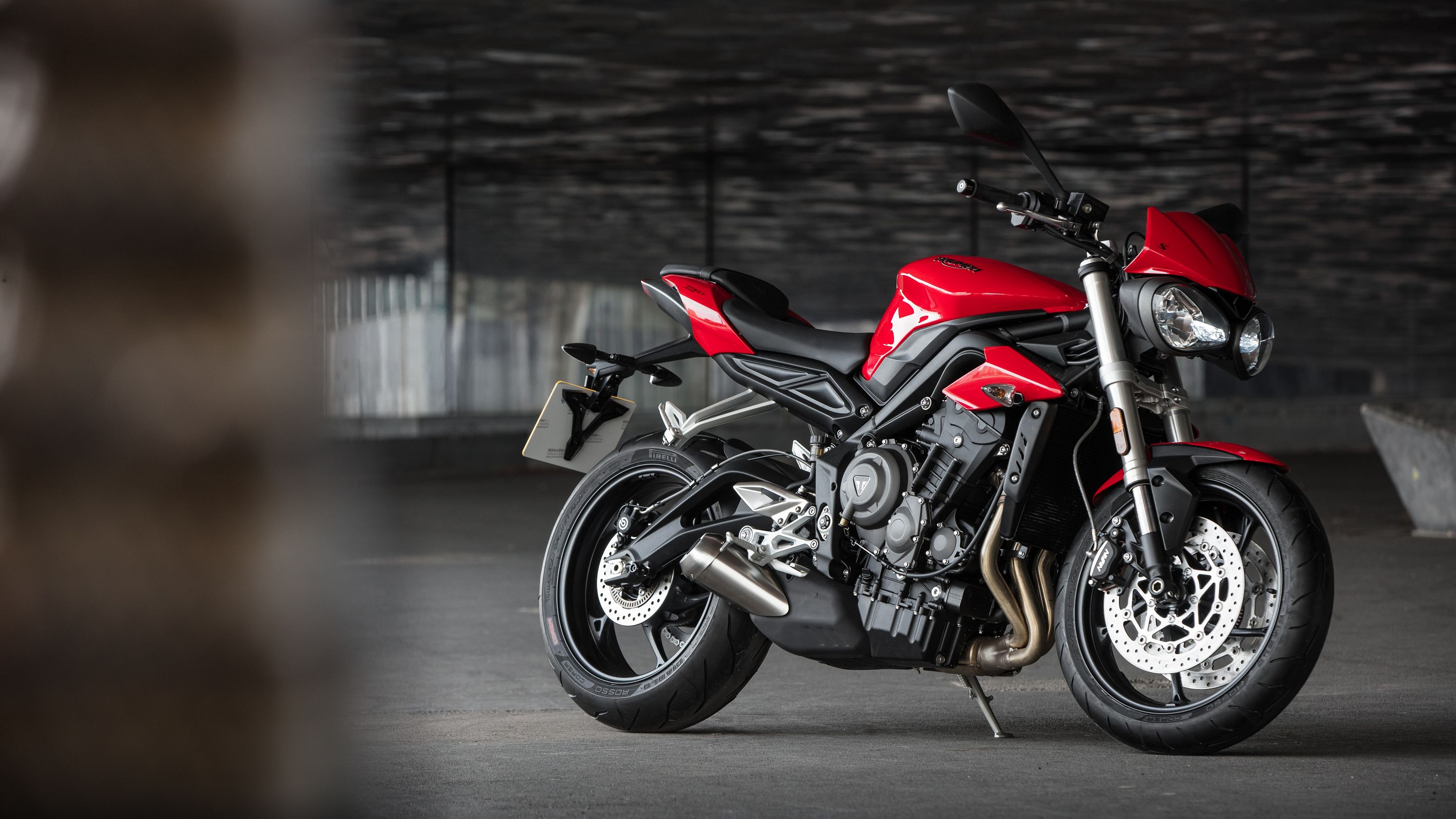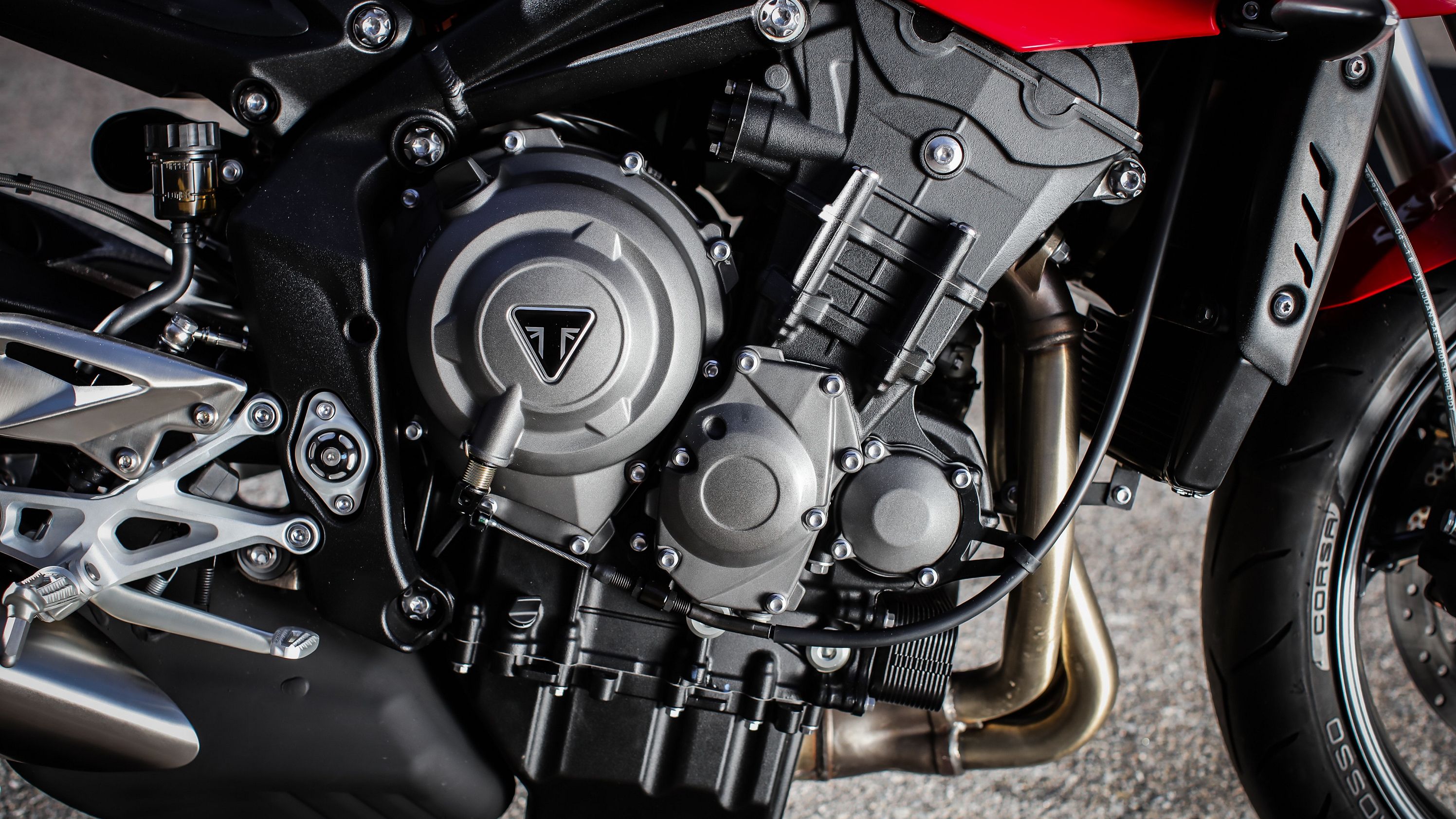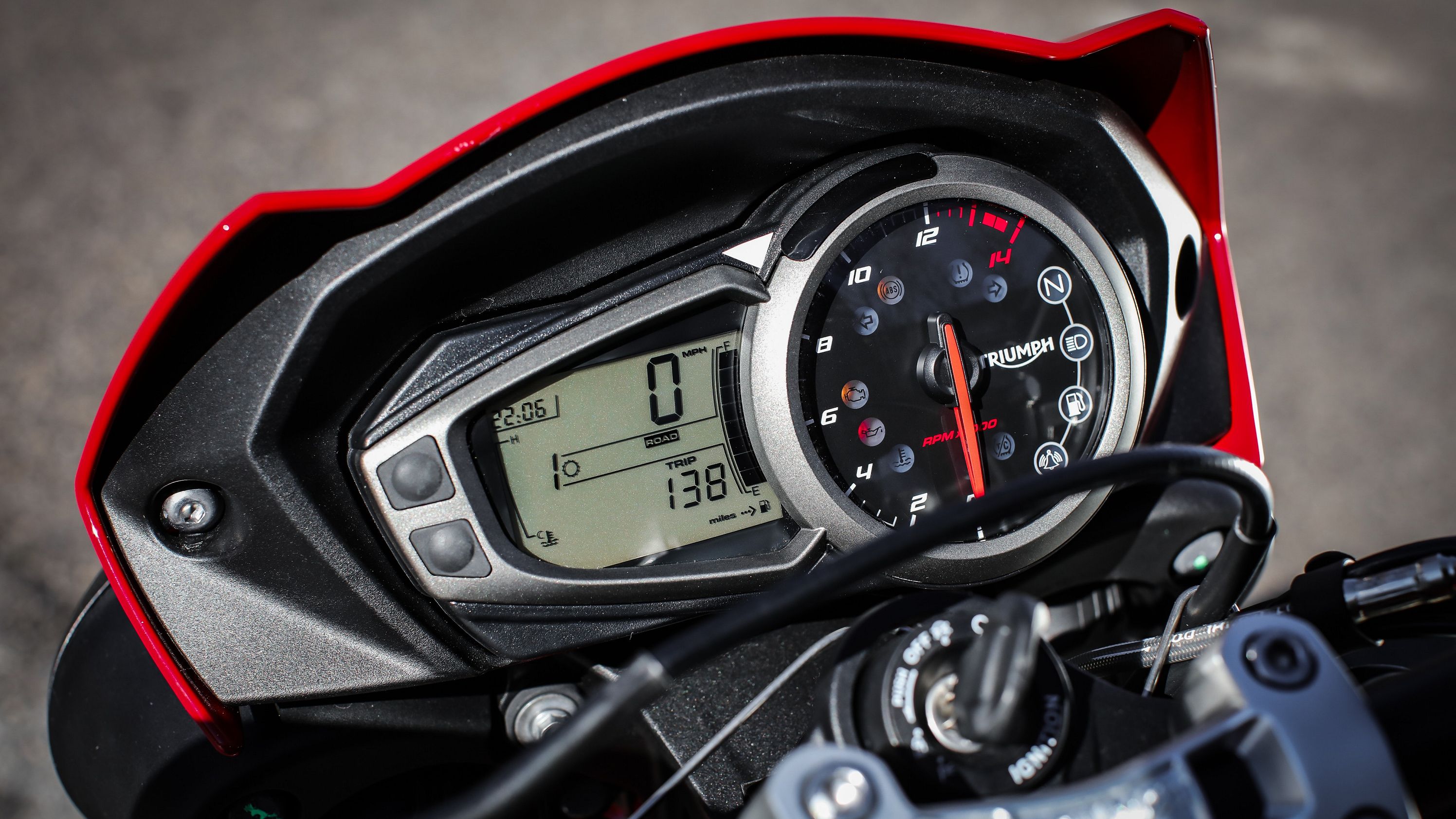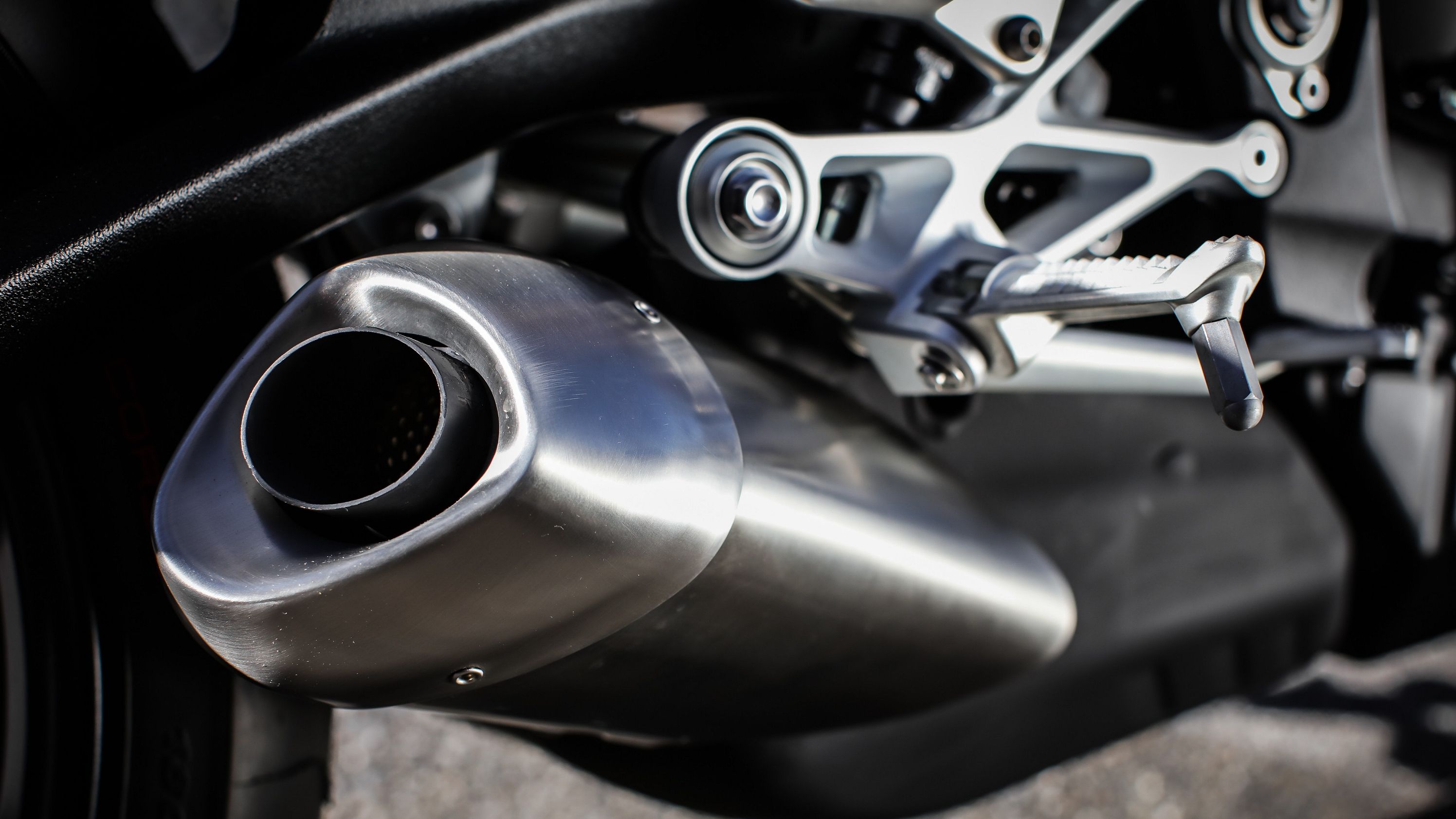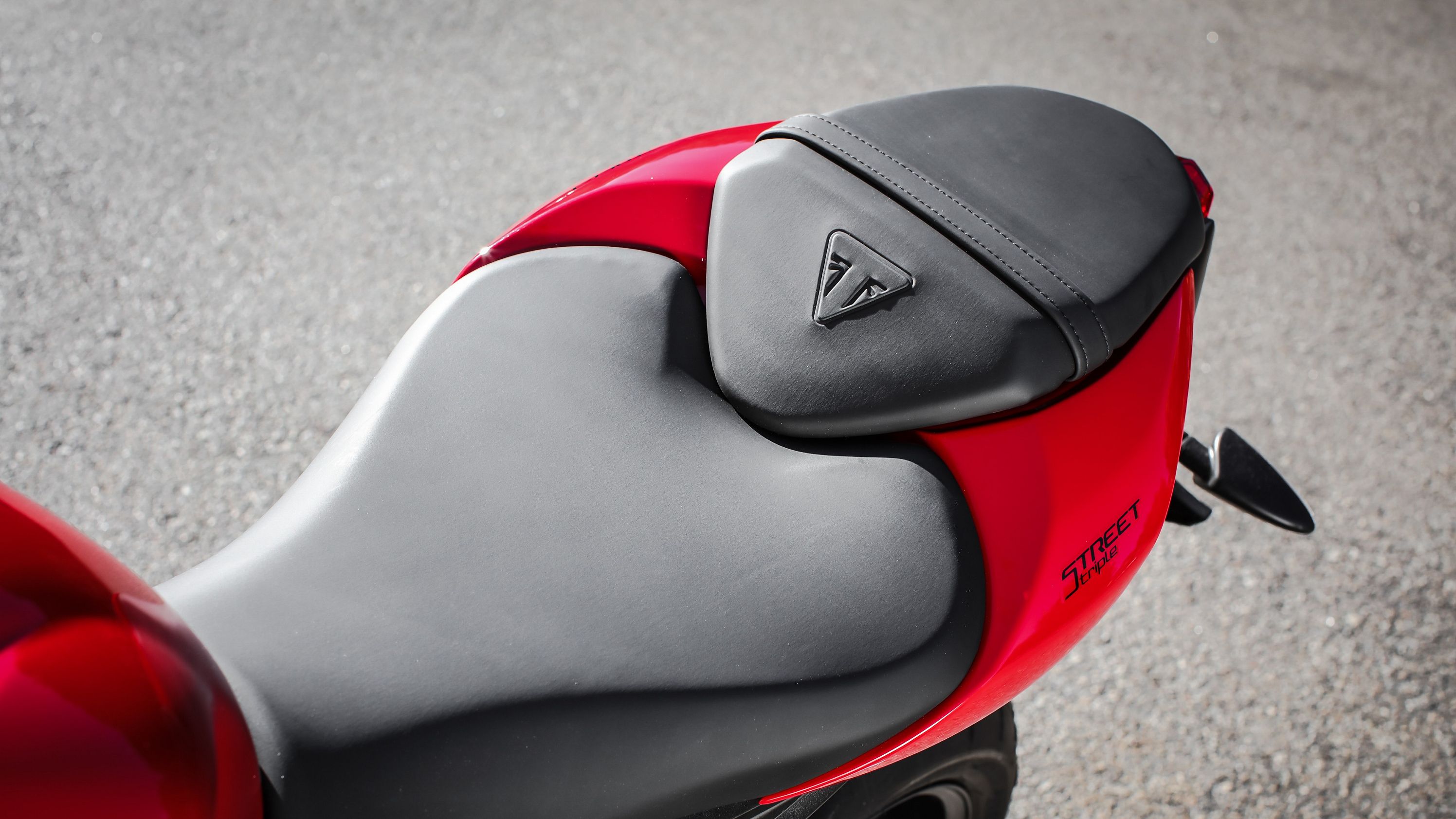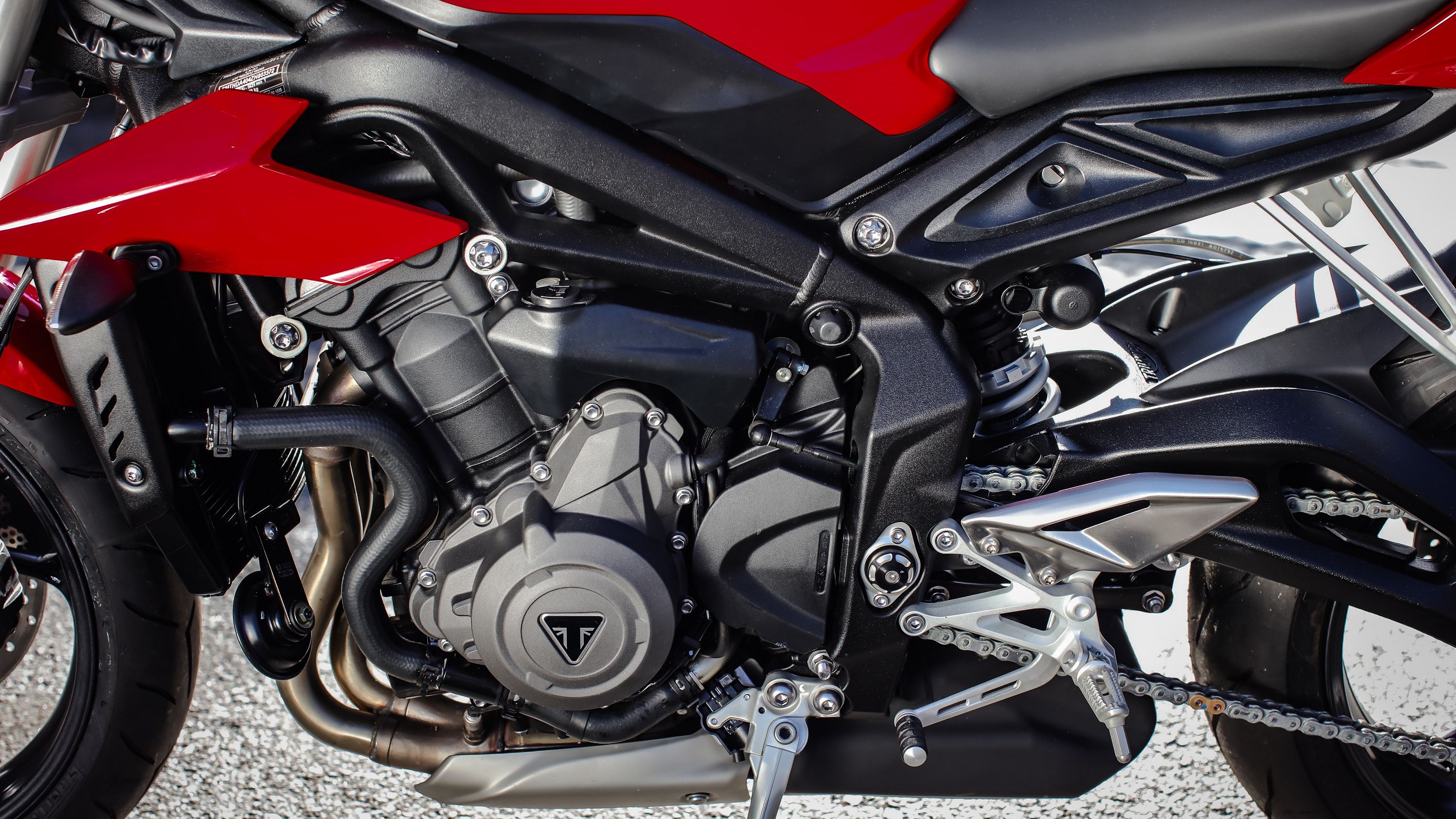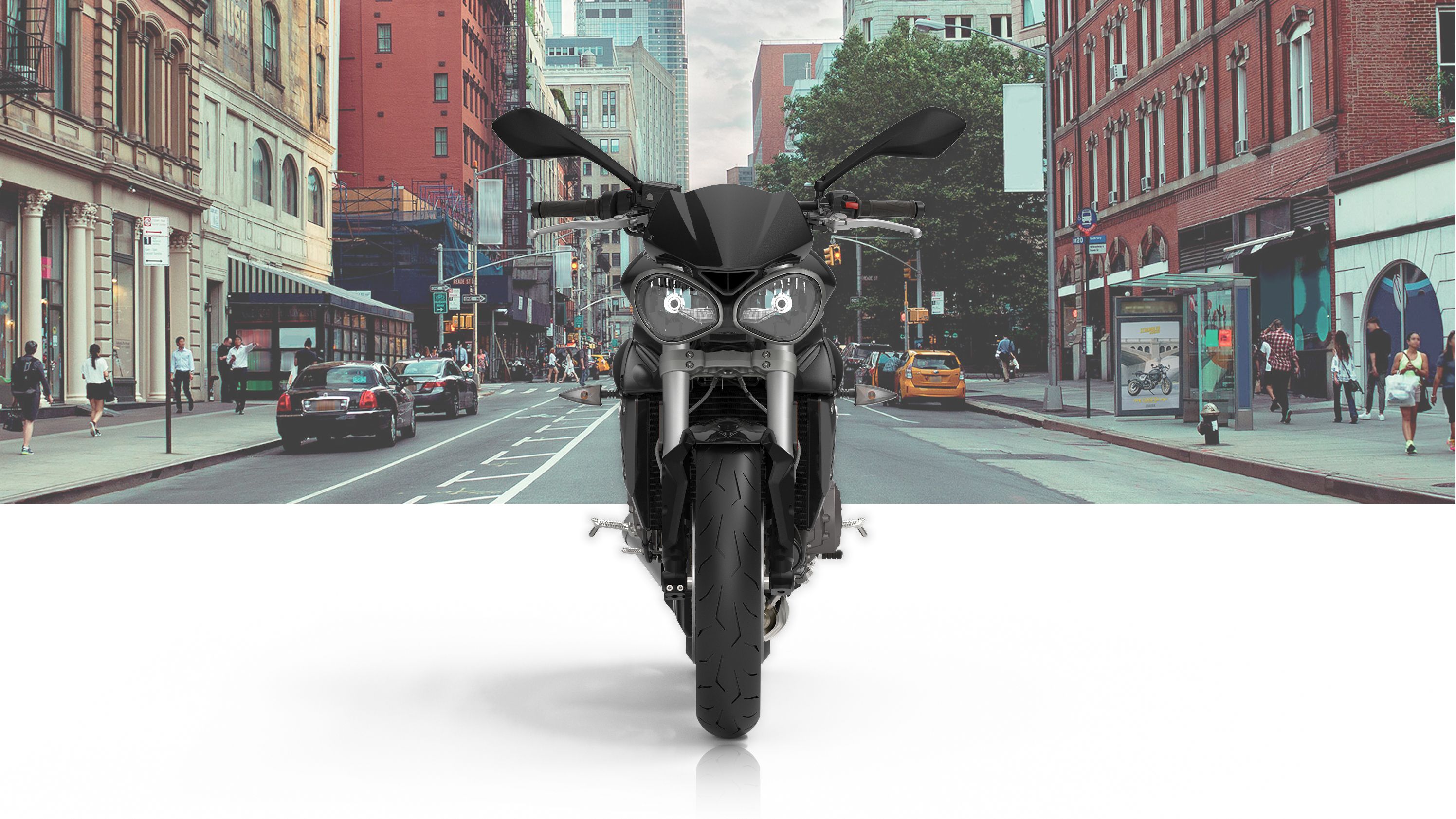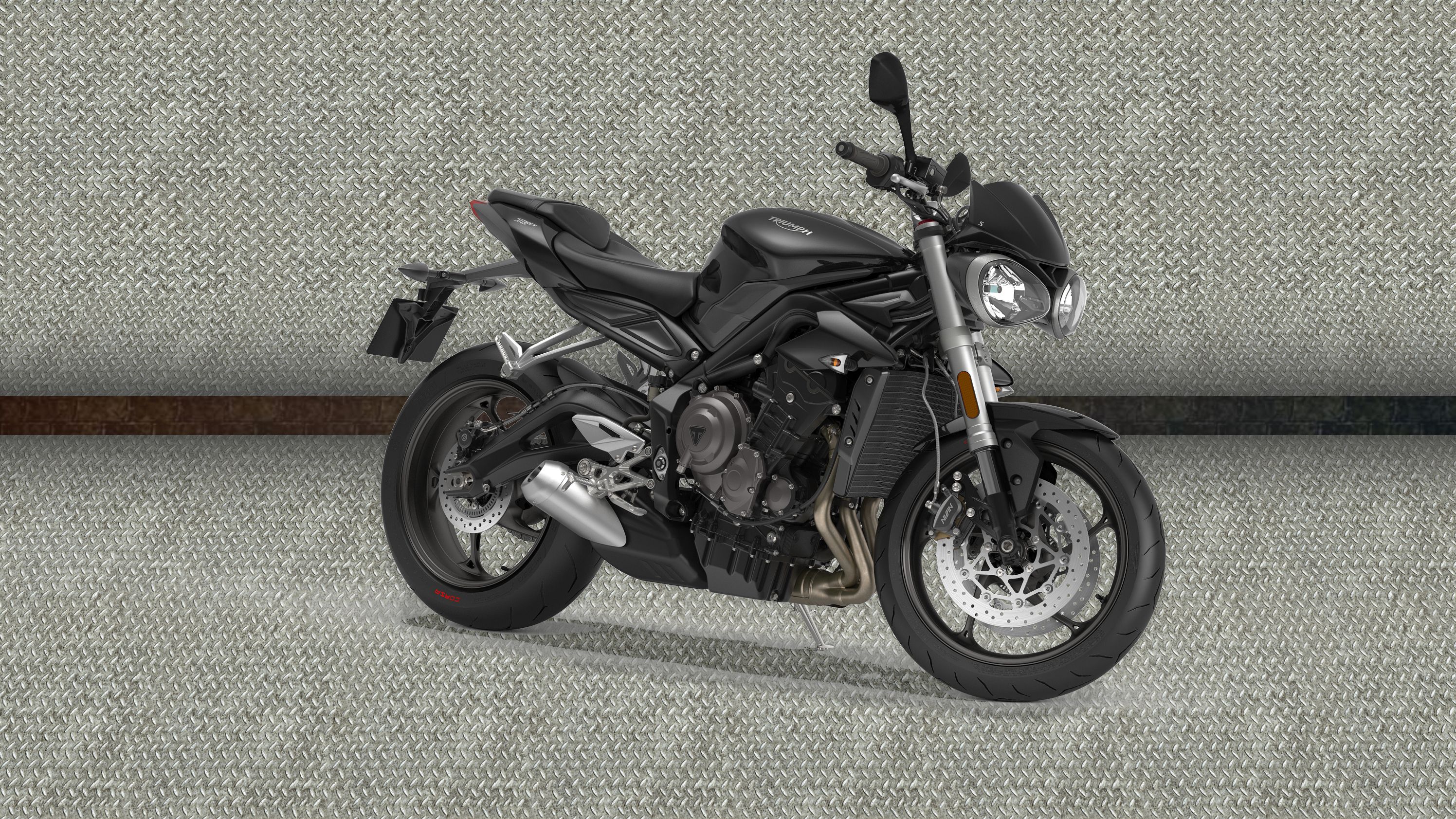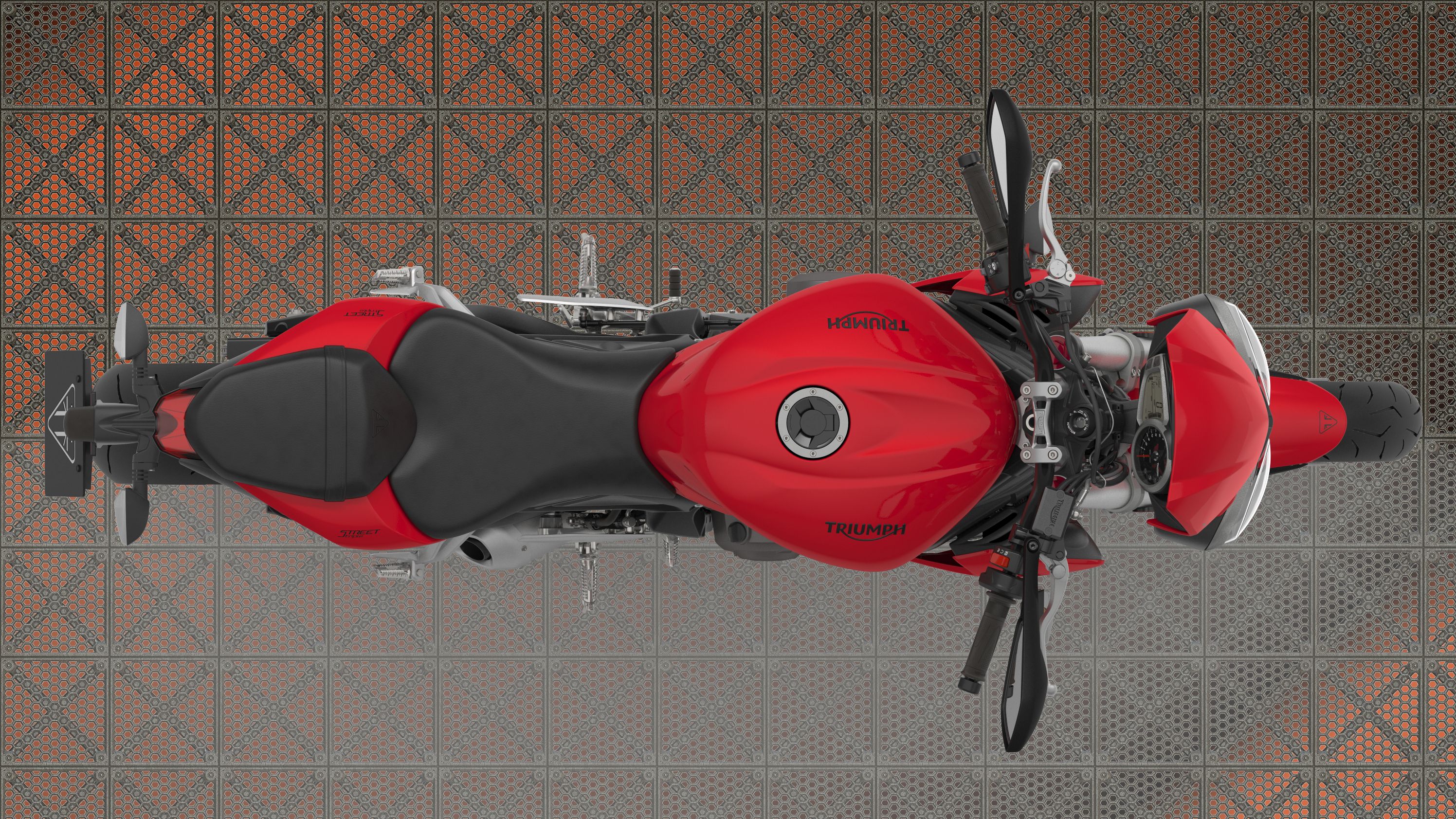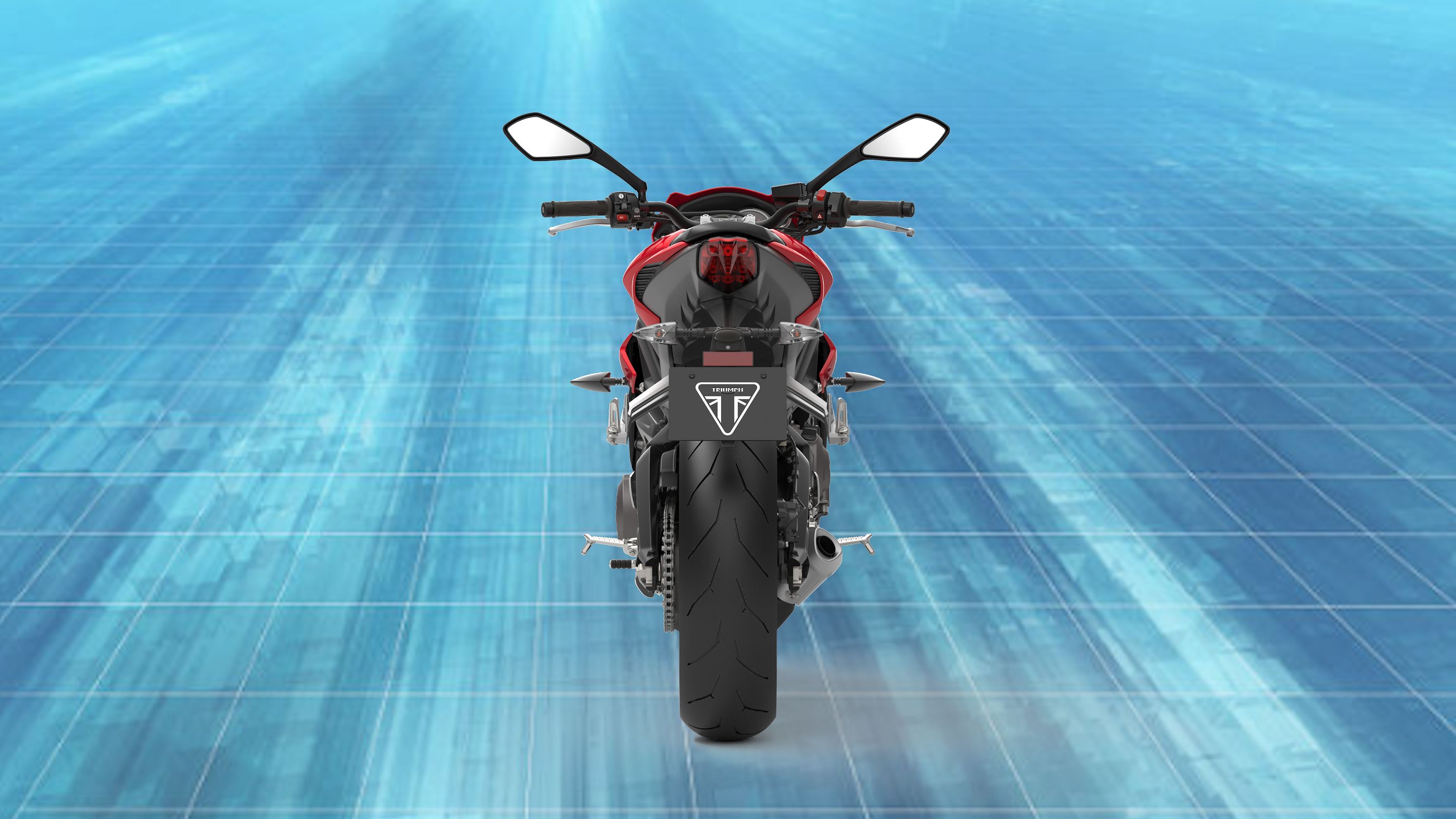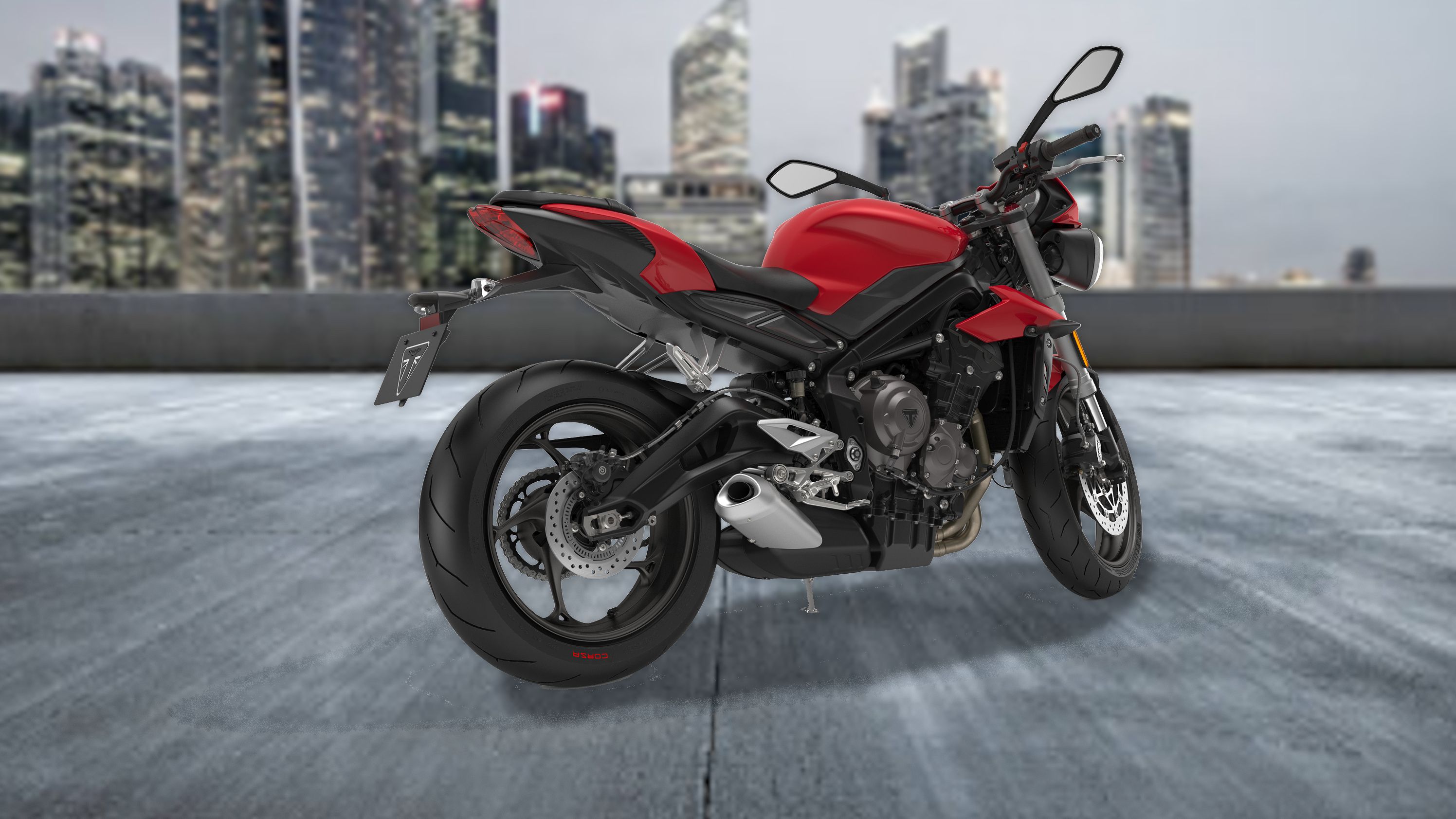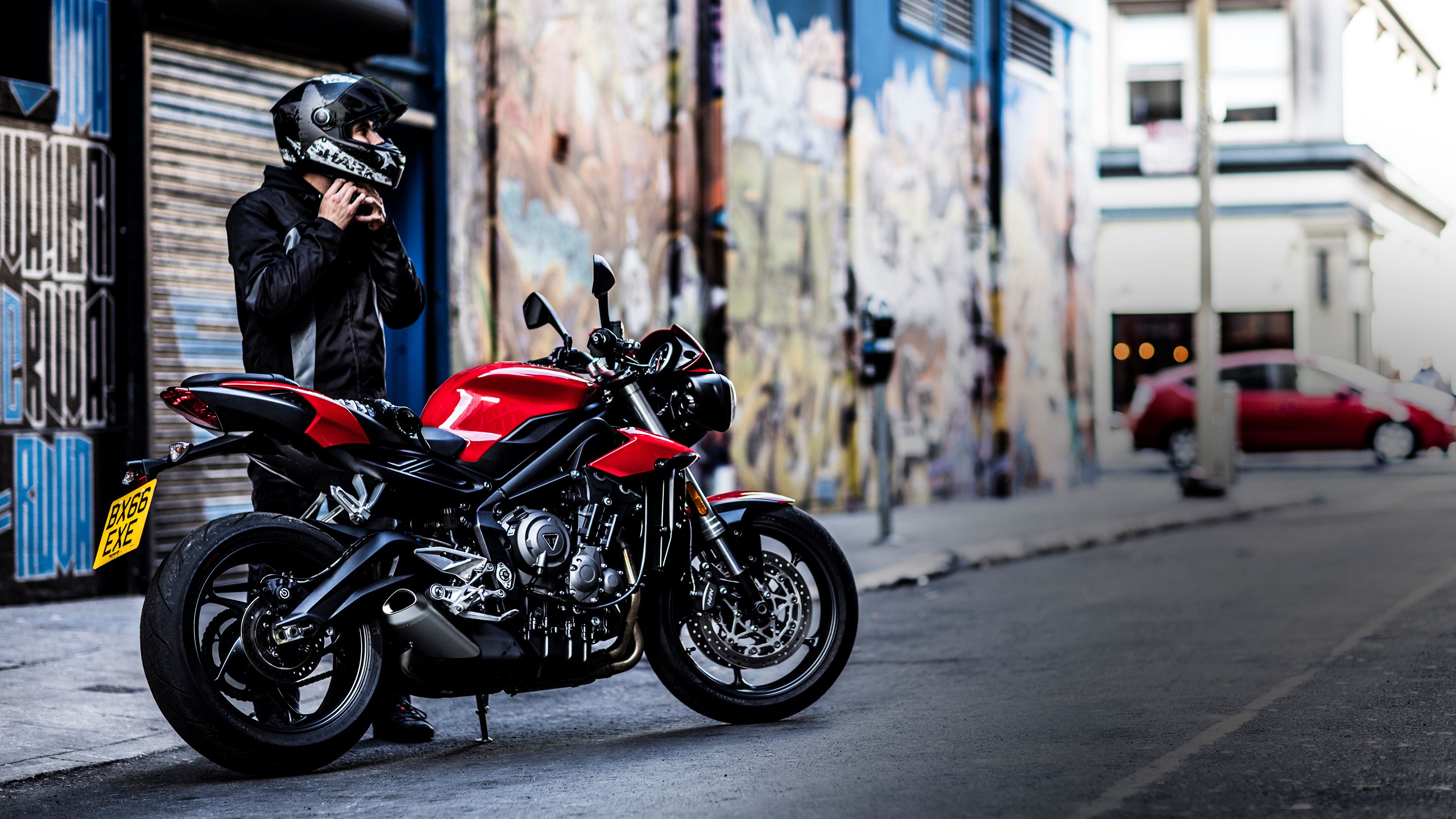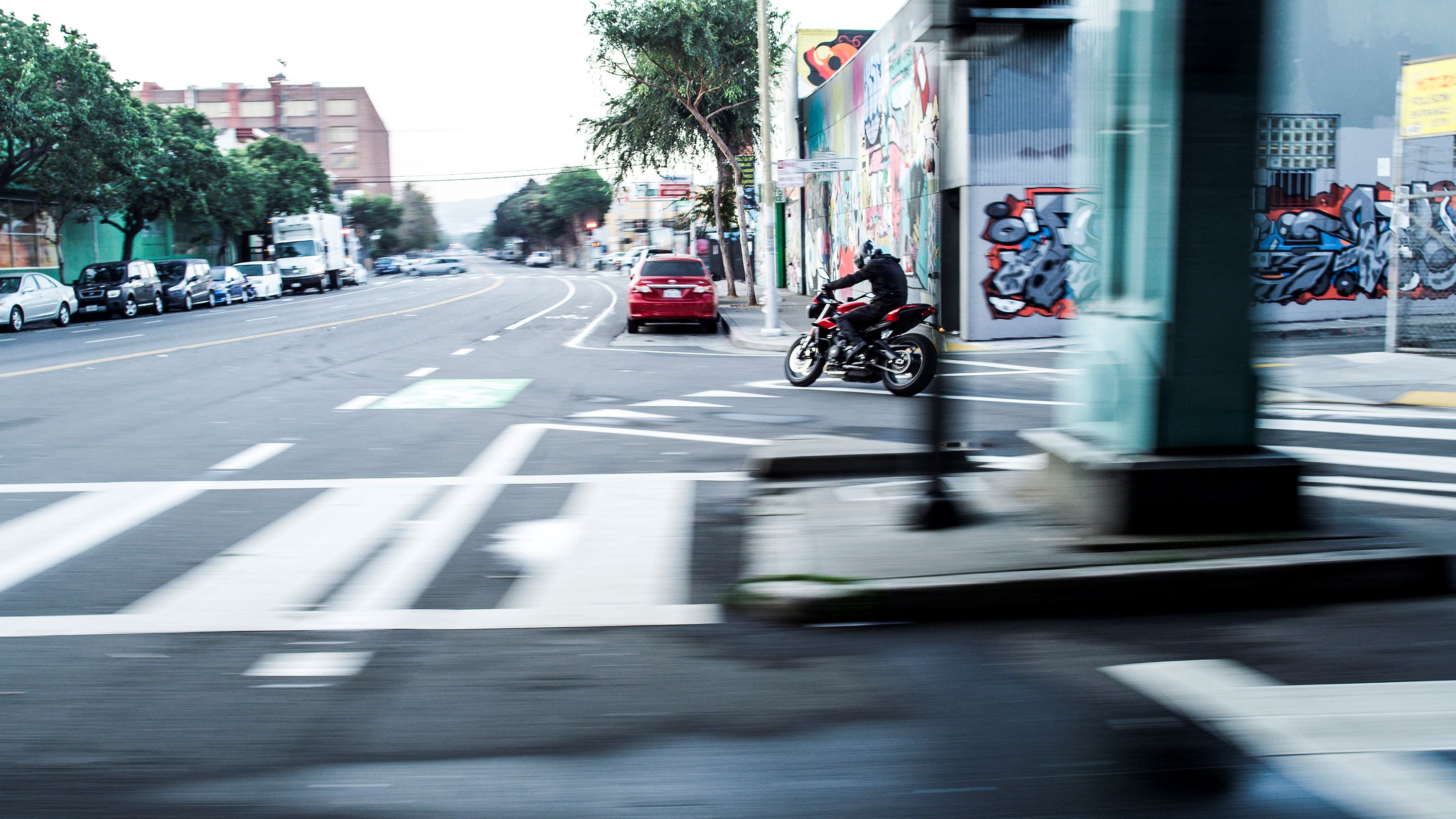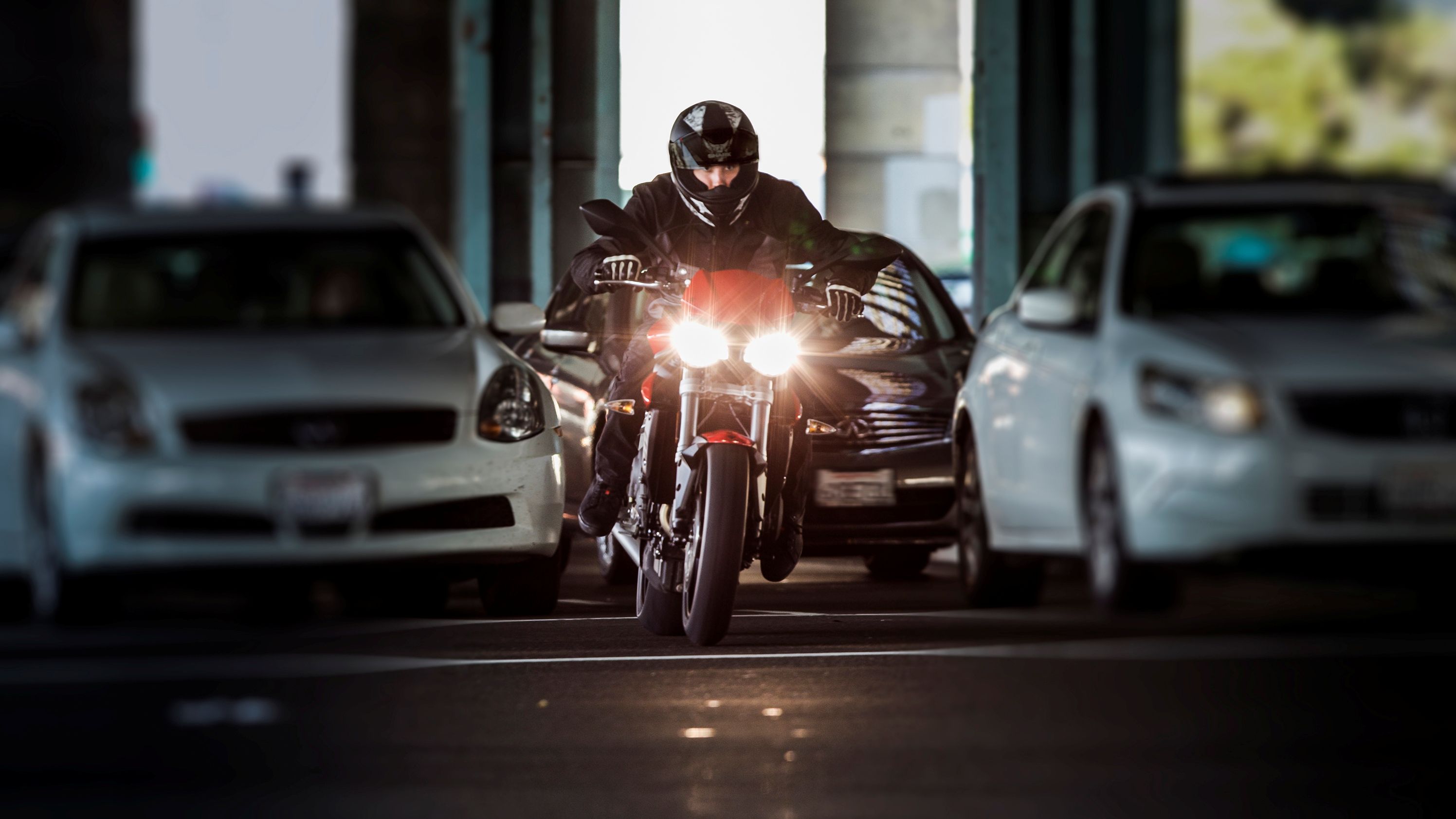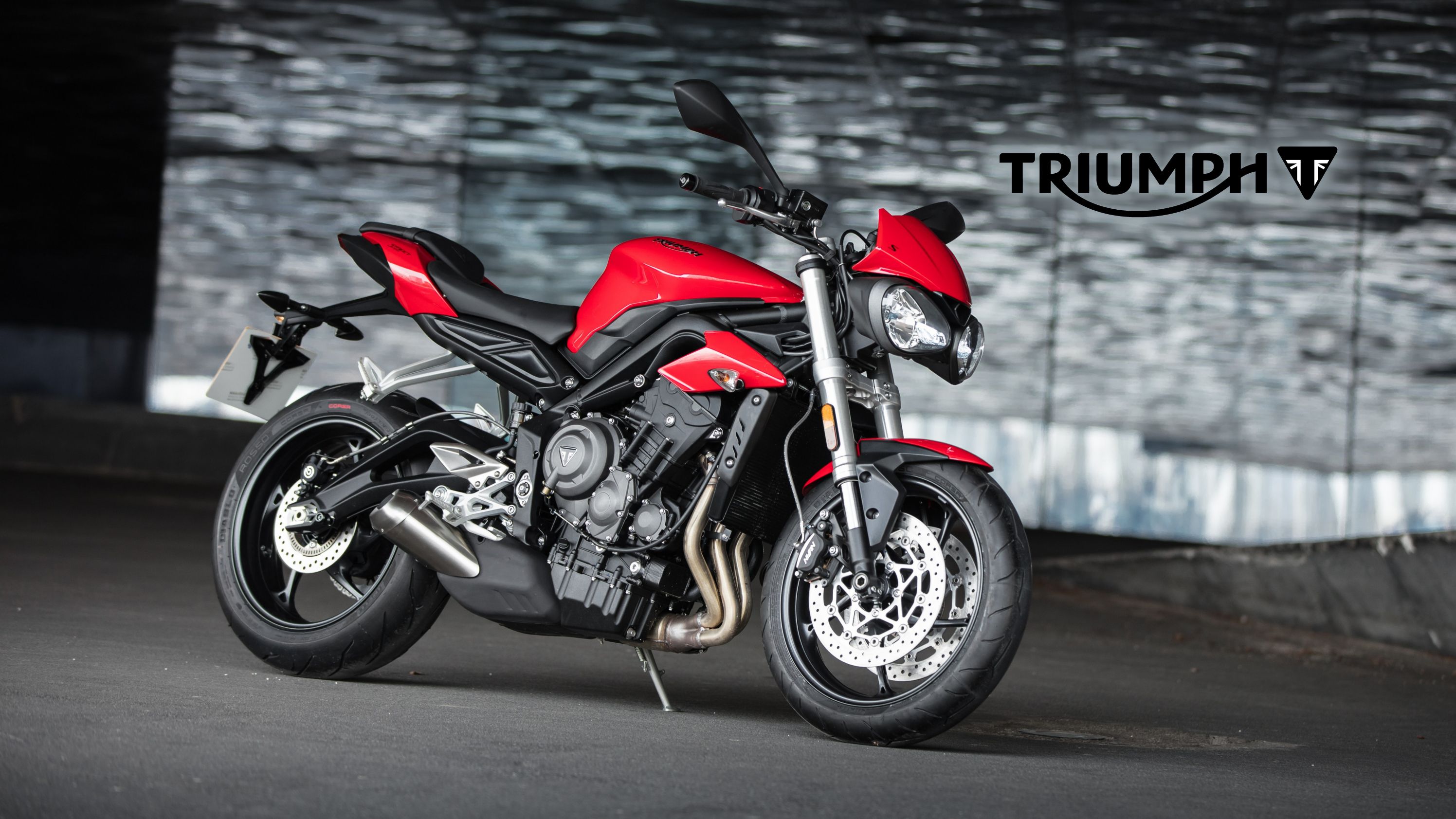Triumph upped the ante in 2018 with a newly-redesigned base model for its Street Triple line and introduced the all-new-in-2018 Street Triple S. The “S” runs with the same naked roadster looks as its predecessor, but with revised bodywork, an all-new powerplant for greater performance and tweaks to the frame to better handle high-speeds. Electronic wizardry abounds in the form of a riding mode feature, traction control, and ABS to help you manage all that newfound power that comes with an impressive 113 horsepower, all for about $10k.
2018 - 2020 Triumph Street Triple S
- Make: Array
- Model: 2018 - 2020 Triumph Street Triple S
- Engine/Motor: inline-3
- [do not use] Vehicle Model: Array
Triumph Street Triple S Design
The Street Triple S straight-up toes the naked-bike line with minimal body covering and Spartan appointments. It starts off right up front with the cut-down fender and beefy front end, only to be reinforced by the headlight can that houses dual LED projectors and shields the instrument cluster while providing the rider with some relief from the air pressure on the upper body. That front end doesn't look too bad from head on, but viewed in profile it seems to project oddly out in front of the forks. I suppose most naked bikes do to some degree, but this seems to be extreme, perhaps because of its overall width I don't know for sure.
A short-rise bar leaves room for the pilot to tuck in tightly over the tank while a short top leg on the rider's triangle allows you to push yourself up nearly upright to a relaxed cruising position. The revised saddle comes with a shallow scoop, but the rise to the pillion pulls double duty as a butt-retention device for the pilot, and the beveled section at the front of the pillion comes embossed with the brand's badge, a stylized “T.”
A nose-down/tail-up attitude lofts the tail end of the subframe for even more of that aggressive stance than before and oodles of sport-tastic appeal that also comes through in the shape of the 4.6-gallon fuel tank. Mid machine, the narrow waist pinches the bottom of the tank, but it flares dramatically near the top to form a nice pocket for the leg and a place to hang a knee when it's time to throw around some body English.
At the rear end, the LED taillight housing forms the terminus of the subframe with a hangey-downey mudguard to mount the license plate and turn-signal whiskers. Too bad, 'cause a hugger and sideplate setup would really look good on this ride and clean it up even more.
Triumph Street Triple S Chassis
Aluminum bones support Street Triple S with a twin-spar structure up front and a die-cast rear section. The yoke-style rear swingarm gets a revamp this year with a gull-wing shape designed to increase stability at speed that also comes with the added benefit of looking freakin' cool. So far, the factory shows itself to be interested in keeping the sprung weight down, and that continues into the hoops with 17-inch, cast-aluminum rims. It seems to have worked out since the “S” is lighter than the previous gen at only 366 pounds, dry.
The rims are pretty sharp looking with a five-spoke design and blackout finish that seems to blend right in with the tire. This ties the design together with achromatic touches at the swingarm, engine, fork caps and more. Tire size is about typical for the genre at 120/70 up front and 180/55 out back with 56 inches between contact-patch centers for a nice compact package with a 24.8-degree rake and 4.1 inches of trail that makes it quite the agile package as well.
A pair of Showa separate function forks float the front end on 4.3 inches of travel with a Showa piggyback monoshock out back that sports 4.88 inches of travel and the obligatory spring preload, but nothing else. In other words; suspension is better than the previous gen, but not by very much and not enough to have some rider-adjustable suspension components. Oh well, the factory had to keep costs down somehow I suppose.
Dual 310 mm discs and twin-pot Nissin calipers slow the front wheel with a 220 mm disc and uni-pot Brembo anchor to haul down the rear with ABS overwatch to protect you from loss of traction due to overbraking. The contact-patch integrity protection isn't limited to the ABS though, it continues into the engine controls, as well.
|
Frame: |
Front - Aluminum beam twin spar. Rear - 2 piece high pressure die cast |
|
Swingarm: |
Twin-sided, cast aluminum alloy |
|
Front Suspension: |
Showa 41 mm upside down separate function forks (SFF), 110 mm front wheel travel |
|
Rear Suspension: |
Showa piggyback reservoir monoshock, 124 mm rear wheel travel. Adjustable preload |
|
Front Wheel: |
Cast aluminum alloy 5-spoke 17 x 3.5in |
|
Rear Wheel: |
Cast aluminum alloy 5-spoke 17 x 5.5in |
|
Front Tire: |
120/70ZR17 |
|
Rear Tire: |
180/55ZR17 |
|
Brakes Front: |
Twin 310 mm floating discs, Nissin 2-piston sliding calipers |
|
Brakes Rear: |
Single 220 mm fixed disc, Brembo single piston sliding caliper |
Triumph Street Triple S Drivetrain
As the devilishly clever name suggests, the power on the Street Triple S comes from a water-cooled, inline three-cylinder engine. Significantly oversquare, the mill runs with 77.99 mm bores and a 53.38 mm stroke for a total displacement of 765 cc. Now, there was a time when a 750-ish cc motor was considered large, but the '70s have been over for a minute now and its really kind of at the top of the mid-range at best at this point. Don't let that fool you. This plant punches above its weight with a total of 113 horsepower, once you wind it up to 11,250 rpm that is.
This high-revving engine even carries the torqueband high up at 9,100 rpm where it develops a total of 54 pounds o' grunt. A ride-by-wire throttle controls the induction with electronic fuel injection to meter the fuel, but it's the secondary systems that the RbW throttle enables that steal the show. First up is the riding modes feature that provides two different power-delivery curves; one for normal “Road” riding conditions and another for riding in inclement weather such as “Rain.” Then, for yet another layer of traction protection, the factory threw on a switchable traction control system that monitors wheels speeds and intervenes when slippage is detected.
While it would be tempting to think of this as an entry-level bike because of its relatively low displacement, that would be a mistake, and all the electronic safety gear in the world will never change that. You'd better respect this little streetfighter.
|
Engine: |
Liquid-cooled, 12 valve, DOHC, in-line 3-cylinder |
|
Displacement: |
765 cc |
|
Bore x Stroke: |
3.07 in (77.99 mm) x 2.10 in (53.38 mm) |
|
Compression: |
12.65:1 |
|
Max Power EC: |
113 hp (83.1 kW) @ 11,250 rpm |
|
Max Torque EC: |
54 lb ft (73 Nm) @ 9,100 rpm |
|
System: |
Multipoint sequential electronic fuel injection with SAI. Electronic throttle control |
|
Exhaust: |
Stainless steel 3 into 1 exhaust system low single sided stainless steel silencer |
|
Final drive: |
O ring chain |
|
Clutch: |
Wet, multi-plate |
|
Gearbox: |
6-speed |
Triumph Street Triple S Price
The Street Triple S runs a cool $10,200 in either Diablo Red or Phantom Black. At that price point, it's a nice bike for what you get.
|
Instrument Display and Functions: |
LCD instrument pack with analogue tacho |
|
Color: |
Phantom Black, Diablo Red |
|
Price: |
$10,200 |
Triumph Street Triple S Competitor
Personally, I can hardly think of naked streetfighters without Yamaha's revamped-in-2018 MT-07 coming to mind. To be fair, Yamaha has helped to define the genre over the years, so I figured it would be a good yardstick against which to measure Triumph's ride.
Right off the bat, the cultural differences make themselves apparent. The MT-07 has a somewhat darker and definitely more sinister overall panache. Yammie pulls in the smallish cyclops headlight can tight to the forks, so the profile of the front end doesn't look quite so odd, but the trade off is that it won't create much of a pocket for the rider.
Dark and bare, the rest of the MT is very similar to its counterpart save the shoulders formed by the intake-scoops that lay alongside the decidedly less graceful fuel tank. Maybe less graceful is too strong a phrase, let's just say the angularity of the tank fits the rest of the look and leave it at that.
The MT takes a hit at the front suspension for its standard layout versus the inverted stems of the Street Triple S, but still, neither are adjustable up front. At the rear end, Yamaha gets some back with adjustable preload and rebound damping for an advantage Trumpet doesn't match. Brakes are similar, but Yamaha slips again with dual 282 mm discs up front against a pair of 310 mm discs on the S, but both manufacturers provide ABS protection.
Yamaha's powerplant falls a few cubes shy at 689 cc, and that has a profound effect on performance. The CP2 mill cranks out a comparable 50 pounds of grunt but falls short at the top end with only 73.7 ponies against 112 horsepower from the Trumpet. Ouch. To compound the pain, the MT gets no sort of rider modes or traction control as with the Triumph, so the MT is overall weaker and less sophisticated.
That lack of sophistication also hands Yamaha a victory at the checkout with a low $7,599 price tag that is significantly more frugal than the Street Triple's nearly $10 K tag, and if you just want an honest and raw ride or are just on a budget, the MT-07 may make a good alternative.
He Said
“The MT may be a good alternative, but the Street Triple S is definitely the superior ride. It could be better with some tuneable suspension, but there's always the aftermarket for that. If there's a downside to this bike, it's the looks. Compared to some of the other naked rides out there, this bike ultimately is a bit of a snore looks-wise. To be fair, the performance makes up for it, says I.”
She Said
My wife and fellow motorcycle writer, Allyn Hinton, says, “The old Street Triple was awesome, but this new “S” is so much more. The engine, for starters, is not the old Street Triple engine. This new “S” has an engine based on the Daytona that was bored and stroked to give us a new 765 cc mill. This is the lightest Street Triple yet and it has a really nice steering range so low-speed maneuvers in close quarters or tight u-turns is a real thing. Ride modes don't affect power, so there's no grandma ride setting here. Ride modes only affect traction control and ABS, so for folks looking for a more tame ride, you can't count on the ride modes to save you. I also notice that, even though the seat height looks tall (relatively speaking; remember that I'm a shortie) on paper, it is surprisingly easy to reach the ground. As a commuter, the rider triangle is tight enough to be sporty, but not so carved in stone that you can't sit up and relax for a cruise up the interstate. I do agree, though, that even though this is a mid-displacement engine and might seem new-rider friendly on paper, it really isn't.”
Triumph Street Triple S Specifications
|
Engine & Drivetrain: |
|
|
Engine: |
Liquid-cooled, 12 valve, DOHC, in-line 3-cylinder |
|
Displacement: |
765 cc |
|
Bore x Stroke: |
3.07 in (77.99 mm) x 2.10 in (53.38 mm) |
|
Compression: |
12.65:1 |
|
Max Power EC: |
113 hp (83.1 kW) @ 11,250 rpm |
|
Max Torque EC: |
54 lb ft (73 Nm) @ 9,100 rpm |
|
System: |
Multipoint sequential electronic fuel injection with SAI. Electronic throttle control |
|
Exhaust: |
Stainless steel 3 into 1 exhaust system low single sided stainless steel silencer |
|
Final drive: |
O ring chain |
|
Clutch: |
Wet, multi-plate |
|
Gearbox: |
6-speed |
|
Chassis: |
|
|
Frame: |
Front - Aluminum beam twin spar. Rear - 2 piece high pressure die cast |
|
Swingarm: |
Twin-sided, cast aluminum alloy |
|
Front Wheels: |
Cast aluminum alloy 5-spoke 17 x 3.5 in |
|
Rear Wheels: |
Cast aluminum alloy 5-spoke 17 x 5.5 in |
|
Front Tires: |
120/70ZR17 |
|
Rear Tires: |
180/55ZR17 |
|
Front Suspension: |
Showa 41 mm upside down separate function forks (SFF), 110 mm front wheel travel |
|
Rear Suspension: |
Showa piggyback reservoir monoshock, 124 mm rear wheel travel. Adjustable preload |
|
Brakes Front: |
Twin 310 mm floating discs, Nissin 2-piston sliding calipers |
|
Brakes Rear: |
Single 220 mm fixed disc, Brembo single piston sliding caliper |
|
Dimensions & Capacities: |
|
|
Width Handlebars: |
29 in (735 mm) |
|
Height Without Mirror: |
42 in (1,060 mm) |
|
Seat Height: |
31 in (810 mm) |
|
Wheelbase: |
56 in (1,410 mm) |
|
Rake: |
24.8º |
|
Trail: |
4.1 in (104.3 mm) |
|
Dry Weight: |
366 lbs (166 kg) |
|
Tank Capacity: |
4.6 gal (17.4 l) |
|
Fuel Consumption : |
50 mpg (4.7 l/100 km) (GTR2) |
|
Top Speed: |
144 mph (est) |
|
Details: |
|
|
Instrument Display and Functions: |
LCD instrument pack with analogue tacho |
|
Color: |
Phantom Black, Diablo Red |
|
Price: |
$10,200 |
Further Reading
Yamaha MT-07
See our review of the Yamaha MT-07.
Triumph Street Triple R
See our review of the Triumph Street Triple R.
Triumph
Read more Triumph news.

